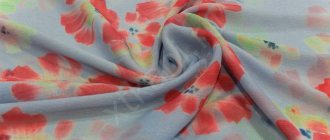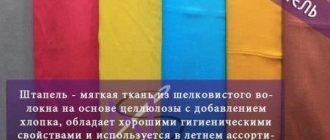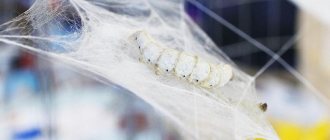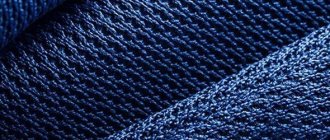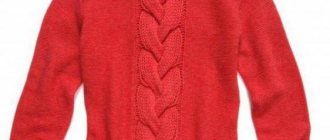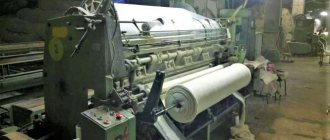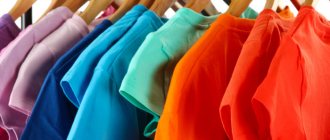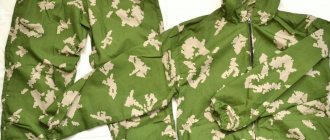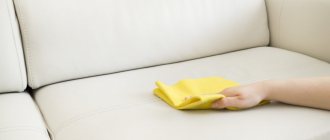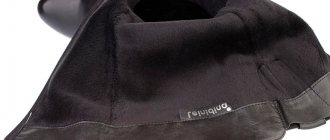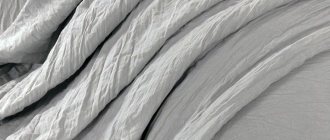Types of textiles by fiber type
The characteristics of the fabric directly depend on what threads it is made from. According to the production method and chemical composition, all textile fibers can be classified into three groups:
- Natural.
- Artificial.
- Synthetic.
Natural or natural threads are of plant origin: flax, cotton, or animal origin: wool, silk. Their main advantage is environmental friendliness and safety for human health.
Artificial ones are obtained through chemical transformations from natural components. Most often, cellulose from different types of wood is used as raw material. The most common artificial fabrics are viscose, bamboo, acetate, and modal.
Such fabrics are distinguished by their attractive shiny surface, high degree of aeration and hygroscopicity. Their disadvantage is their low strength, especially when wet.
The starting materials for synthetic fibers are products from the processing of coal, oil or natural gas. The fabrics that are obtained from them - lavsan, acrylic, polyester, nylon, elastane and others - have increased strength and abrasion resistance. But unlike representatives of the other two groups, they do not have good breathability and do not always meet hygienic requirements. In some cases, synthetics can even provoke an exacerbation of diseases in a person - allergies or asthma.
Taking into account all the positive and negative aspects of each type of fiber, manufacturers produce blended or combined fabrics with optimal characteristics, which include both natural and chemical components.
When is the bruise almost invisible?
Crease test
When purchasing a new item or material for its manufacture, you should always check how much it wrinkles. To do this, squeeze the edge of the fabric tightly in the palm of your hand and hold it for at least 10 seconds . If the resulting creases do not straighten out, you will need special means to maintain the product in decent shape.
To make the fabric wrinkle less, crush it yourself
- A fairly effective technique for making clothes wrinkle less is cutting with a bias thread.
- The material does not wrinkle so much if a special finishing is used in its manufacture, but unscrupulous manufacturers may make it disappear after the first wash.
Companies producing high-quality natural fabrics use selected raw materials with increased thread twist and high weaving technologies. In this case, a slight wrinkle in the suit looks very elegant and is a sign that its owner wears luxury, expensive items
Crash fabrics with specially industrially applied creases also look very stylish. This operation can also be done at home.
Stages of a “home crash”:
- To do this, a thin fabric (can be mixed or synthetic) must be soaked in cool water and wrung out before cutting.
- Then the material is laid out on a flat surface and gathered in small folds on each side, after which it is rolled up into a rope (this is best done with two people) and twisted into a knot, which is tied with cotton braid.
- Place the twisted fabric in the microwave for 4 minutes (minimum setting), then take a break for 4 minutes and repeat this up to five times, and leave until completely dry.
From such fabric you can sew a crinkled straight skirt or dress that will withstand several washes, after which the “home crash” operation can be repeated.
Classification of textile properties
Textile materials include three types of fabrics: woven - obtained by interlacing threads on special machines; knitted, which are produced by knitting; non-woven - made by other methods, such as felting. All of them, regardless of origin, are characterized by certain properties, which can be classified as follows:
- physical and mechanical;
- hygienic;
- geometric;
- technological;
- operational.
Let's consider the qualities of fabrics that are included in each of the listed groups.
Physical and mechanical
These are factors that characterize the ability of textiles to withstand serious loads - compression, bending, friction, etc. This group includes the following indicators:
- tensile strength. Depends on the composition of the material, the thickness of the threads, the method and density of their weaving. Synthetic fibers have the greatest strength, cotton and wool have the least strength;
- creasing. This is the ability of fabrics to form folds, creases and wrinkles, which can only be eliminated by ironing or steaming. Cotton materials are considered the most easily wrinkled - chintz, calico, staple, and polyester fabrics are the least susceptible to deformation;
- drapeability. Some fabrics - silk, viscose, satin, chiffon and others - are very soft and pliable. They easily form beautiful folds, adding special attractiveness and elegance to the products. Denser and stiffer fabrics - velvet, jacquard, moleskine - drape poorly because they do not have the necessary flexibility;
- rigidity. This property refers to the ability of tissues to resist changes in shape. There are materials that stretch and sag over time. Others, on the contrary, retain their original appearance for several years;
- wear resistance. During operation, under the influence of mechanical, biological, chemical and other factors, fabrics lose their original appearance and are destroyed. The fibers become thinner, fall out, the material stretches and becomes unusable. The highest level of this indicator is found in synthetic fabrics and materials with satin or satin weaves. Cotton fabrics with a simple linen method of joining threads wear out first.
It is important to know! Very often, rapid wear of products is caused by their incorrect operation and neglect of maintenance rules. Washing at unacceptable temperatures, ironing synthetic items with a hot iron, strong spinning or drying on heating devices can dramatically reduce the service life of even the most resistant fabrics.
Hygienic
The fabric not only protects people from exposure to dust, dirt, bacteria and microorganisms. It itself must be completely safe: not emit harmful substances and not provoke the development of various diseases. Hygienic indicators include:
- hygroscopicity. This is the ability of fabrics to absorb atmospheric moisture and retain it under certain conditions. The indicator is not a constant value and varies depending on the air temperature and its humidity. If the room with closed windows is drier than outside, then the level of hygroscopicity will be lower. This value is highest for natural materials, for example, knitted fabrics and interlock. Synthetic and artificial fabrics are significantly inferior;
- wetness. Essential characteristics of towels, linen, outerwear, etc. To determine the level of water absorption, place a sample of the material in a container of water for one minute. Low wetting for raincoat fabrics, diagonals, fabrics with twill weave;
- breathability. There is air between the body and the inner layer of clothing. Through pores in the material, it is exchanged with the outside. When this property of a fabric is weakly expressed, a person begins to steam in clothes and sweat heavily, which negatively affects his comfort and is harmful to his health. It is especially important that the material “breathes” in children's clothing. The highest breathability is found in fabrics made from natural raw materials;
- thermal protection. This property preserves the heat generated by the human body. This is especially true for clothing intended to be worn in the cold season. Heat saving directly depends on the amount of air that accumulates in the fibers of the material and between them. Woolen fabrics are recognized as the warmest, as well as recently introduced synthetic fillers - Thinsulate, holofiber and isosoft;
- dust capacity. An indicator that is considered negative, since the active accumulation of dust and dirt in the pores of the material leads to the loss of not only its appearance, but also its functional properties;
- electrification. Many synthetic fabrics can create static electricity on the surface. Most often this occurs when products come into contact with human skin or when two fabrics rub against each other. Discharges occur so strong that sparks are formed, especially noticeable in a dark room. This property is also a disadvantage, and textile manufacturers are trying to get rid of it.
It is important to know! Doctors believe that the increased electrification of clothing and home textiles has a negative effect on the human cardiovascular and nervous system. To protect yourself from this unpleasant phenomenon, products must be treated with antistatic aerosols before wearing.
Technological
The technological qualities of fabrics are determined during cutting or sewing. These include the following characteristics:
- cutability. This is the ability of a material to be damaged by a needle. Such places are called holes; they significantly reduce the strength of the canvas and violate its integrity. The lowest indicators are found in loose fluffy fabrics with large gaps between the fibers. The needle easily gets between the threads and does not tear them. In contrast, this property is clearly expressed in materials with increased density, as well as those containing viscose or acetate. Cutting is especially dangerous for knitted fabrics, on which arrows and hooks can form. Therefore, needles and threads should be carefully selected for each fabric, and the appropriate stitch size should be set;
- crumbling. Materials with satin or satin weave suffer from this phenomenon. Both during work and during wear, individual threads may fall out of the cuts and seams, forming a fringe. Flowability is dealt with by applying special strengthening compounds to the fabric. Some canvases are pressed or rolled;
- slip. And again, as in the previous case, satin and satin come out on top. These beautiful shiny and smooth fabrics literally slide off the cutting table or under the sewing machine. Many silk and viscose materials also have high slip properties. When working with them, you need to use a backing made of flannel or felt;
- opening of seams. It is believed that the greater the difference between the thickness of the warp and weft threads, the greater the likelihood that the material will begin to “crawl” at the seams. This especially applies to problem areas - darts, sides, armholes, fasteners, etc. This not only worsens the appearance of things, but also significantly reduces their service life. To eliminate the shortcoming, the stitching is made more frequent;
- picturesqueness. The degree of complexity of a pattern or pattern can significantly increase the fabric consumption when cutting. The simplest are small cells, flowers or circles. Difficult-to-design materials include jacquards, tapestries and other materials with intricate interweaving of lines;
- fabric cutting resistance. This property depends on the thickness, density and rigidity of the material, as well as on whether it has been pre-impregnated with various compounds. Linen and some cotton fabrics are very difficult to cut; the most pliable are silk and wool.
It is important to know! Before purchasing, it is advisable to familiarize yourself with the sewing properties of the fabric. Considering the difficulties that may arise when cutting and stitching on a machine, you need to select problematic materials with a reserve.
Operational
These include characteristics that have a direct impact on the service life of products. Under the influence of various factors, the material may lose its attractiveness or become completely unusable.
- Shrinkage. Many fabrics shrink after soaking, washing or steaming - changing their original geometric parameters. At sewing enterprises, this leads to unnecessary costs: craftsmen are forced to increase the size of the patterns and spend more material. Synthetic fabrics give the minimum shrinkage, and natural fabrics, especially cotton and wool, give the maximum. In order to reduce this deficiency, fabrics are pre-treated using special anti-shrink machines or decatification is used - forced soaking.
- Form stability. This property is also called the plasticity of the material. When sewing, sometimes it is necessary to forcibly reduce a certain section of the fabric using wet-heat treatment or, on the contrary, stretch it. Some materials are easy to mold. These include loose cloth pure wool. Materials that have a pile or a convex pattern most often cannot be ironed and are considered non-plastic.
- Elasticity. This property is most pronounced in lycra, a synthetic polyester material. Cotton and linen have the lowest elongation. In order for clothes to fit the figure well, a small amount of lycra is introduced into many fabrics.
- Peeling. It happens that after prolonged use, small pellets appear on the surface. The susceptibility of the fabric to peeling is determined by testing it on special machines. If after 400 cycles no lumps appear, the fabric is considered anti-pilling. These materials include many types of synthetics, for example, microfiber.
- Light weather. Quite often, the cause of premature wear of textiles is the impact of certain atmospheric factors - sunlight, high humidity, temperature, oxygen content - causing photochemical processes. Natural silk and synthetic nylon are the least resistant to light weather, while wool, nitron and polyester are the most resistant.
It is important to know! Clothes made from fabrics that can deteriorate when exposed to ultraviolet rays should be hung in a darkened room after washing. This will significantly increase its service life and maintain its attractiveness for a long time.
Geometric
These characteristics determine the basic dimensions and weight of textiles. The list of indicators includes:
- fabric length. It is measured in the direction of the warp threads. This figure can vary from 10 to 150 m. It should be taken into account that when laying sheets for cutting, their length can increase due to their tendency to stretch;
- width – the distance between the edges of the material. Linen fabrics have a width of 0.6–1 m, dress fabrics – 0.9–1.1 m, and coat fabrics – 1.3–1.5 m. It is very important to correctly apply patterns to the material during the cutting process in order to reduce losses;
- thickness. This indicator is measured between the most protruding fibers of the front and back sides. For cloth and drape it is 3–3.5 mm, and for chiffon or organza it is 0.15–0.2 mm;
- the mass of the fabric depends on its surface density, which ranges from 10 to 750 g/m2. For each article, this indicator is strictly fixed, and deviation from it is considered a violation of quality standards. To determine the surface density, a sample of the fabric is measured and weighed in laboratories, using only special verified instruments.
In addition to the above properties, the way the fabric looks is also important. When purchasing, you should pay attention to very significant aesthetic indicators: surface texture, color, brightness of the fabric, shine, the presence of decorative elements, for example, metallized lurex threads.
It is important to know! The manufacturer attaches a label to each roll of fabric that lists geometric parameters, fiber composition as a percentage, degree of color fastness and crease resistance group. In order not to make a mistake with your choice, you should carefully read the description of all the characteristics of the material.
In order to best satisfy customer requirements, fabrics must have a complex of different properties. After familiarizing yourself with them, you can purchase a material that is ideal for a particular product.
Individual wardrobe plan
| Step-by-step plan for creating a wardrobe: | |
| Mapping your wardrobe needs | |
| We analyze your existing wardrobe | |
| Filling out the clothing distribution table | |
| Making a shopping list | |
Receive my free style recommendations by email:
Did you like the article? Rating 5.00 (7 votes)
